#We might reach levels of cinema we have never achieved before this December
Explore tagged Tumblr posts
Text
My brain: "It's okay Hugh Grant as an Oompa Loompa playing a tiny little flute can't hurt you"
Hugh Grant as an Oompa Loompa playing a tiny little flute:
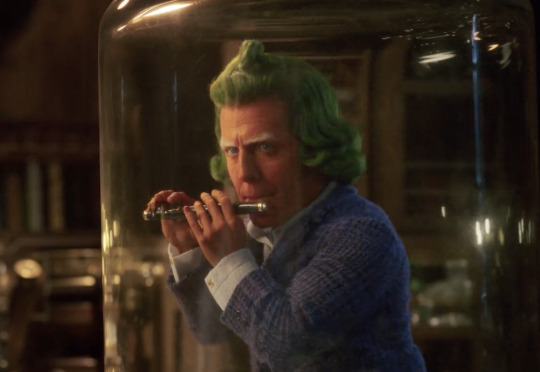
#Wonka#Hugh Grant#Someone get this man OUT OF THERE and I do NOT mean the jar!!!!!!!!#I was actually kinda on board with the movie as a concept? Like I think Chalamee was doing an alright Wonka and I could see it work#But then we got here and I just BURST out laughing#This is so stupid. Hugh Grant is an Oompa Loompa. He plays a tiny little flute#We might reach levels of cinema we have never achieved before this December#Seta speaks
38 notes
·
View notes
Text
IN-DEPTH: How Did Demon Slayer: Kimetsu no Yaiba Become Japan’s Hottest Domestic Franchise?

At this point, it’s safe to say that Demon Slayer: Kimetsu no Yaiba is one of the biggest franchises this decade. The manga series sold more than double what One Piece did at its peak in 2020, the Mugen Train anime film has outgrossed Hayao Miyazaki’s Academy Award-winning Spirited Away to become the king of the Japanese box office, and the franchise is estimated to bring in 270 billion yen to the Japanese economy by itself this year.
Looking at all of that, there is no question that Demon Slayer is the hottest domestic property in Japan right now. But how did it get here? Let’s examine how the little manga series from new author Koyoharu Gotouge became a cultural phenomenon in Japan.
Demon Slayer’s History with Jump
Before the Demon Slayer anime started, the series was running in Weekly Shonen Jump, one of Japan’s top manga magazines. The series started in Jump on February 15, 2016, and had modest success, with around 3.5 million copies of the manga series printed and sold as of February 2019, just a few months before the anime premiered in April 2019.
During Jump Festa 2017 — an annual exhibition for series being released by Shueisha in Weekly Shonen Jump and their other manga magazines — the first chapter of Demon Slayer was given out in a sample booklet alongside other new series that had started in 2016, such as THE PROMISED NEVERLAND. Outside that sample booklet though, Demon Slayer barely existed in the mind’s eyes of attendees, with gazes glued to NEVERLAND and BORUTO as the new hot series.
It wasn’t until Jump Festa 2020 (held in December 2019) that Demon Slayer got some time in the spotlight, with the Aniplex booth doing its best at showing off the series that had become such a hit over the previous summer.

Demon Slayer at the Aniplex booth during Jump Festa 2020 (photo: Daryl Harding)
Even though the collected manga volumes weren’t selling as much as one might expect from the now behemoth of a series, Demon Slayer was slowly gaining traction among fans, but wouldn’t really break out until just before the first episode of the TV anime aired on television in Japan.
The Outside Influences Brought into Demon Slayer
When the Demon Slayer TV anime was announced in June 2018, it was revealed that the studio Ufotable would be adapting the series. The Aniplex-affiliated studio is widely praised for their work on the Fate franchise, which has culminated with the Fate/stay night [Heaven’s Feel] film series. Ufotable-produced works are known to already be event-type series, and with Demon Slayer being their first Weekly Shonen Jump adaptation, it was a series to look forward to on that point alone.

First Demon Slayer TV anime key visual (source: Anime Eiga)
Just before the series premiered in April 2019, it was also revealed that popular singer LiSA — who was then mostly known for her work on the Sword Art Online openings, including the wildly popular theme to the Ordinal Scale anime film “Catch the Moment” — would be singing the opening theme for the series, with the first preview of the song at Anime Japan that year. LiSA went on to have a solo concert at the Yokohama Arena on the last days of the Heisei era in April 2019, selling out the 17,000 capacity hall.
youtube
AnimeJapan 2019 Trailer
Music can be a huge element in propelling the popularity of a series in Japan. Some of the biggest anime over the last decade was supported by their opening and ending themes, which kept the anime in people's minds. Demon Slayer’s opening theme “Gurenge” became such a hit in its own right that it dragged the rest of the series along with it. This formula worked to bring Your Name to the forefront of Japanese pop culture in 2016 — you couldn’t go anywhere in Tokyo without hearing Radwimps. And the double whammy of “Gurenge” and “Homura” (the theme for Demon Slayer: Mugen Train) has helped the series achieve even more success.
Rounding out the series was the star-studded voice cast who all have their own fan bases. Voicing Tanjiro is Natsuki Hanae, who was best known at the time for Ken Kaneki in Tokyo Ghoul; Zenitsu is voiced by Hiro Shimono, who voices Connie in Attack on Titan, and the boar himself Inosuke is voiced by Yoshitsugu Matsuoka, who voices Kirito in Sword Art Online. Nezuko's voice actor Akari Kito, who largely played side characters up until her casting in Demon Slayer, would become a well-known name and go on to play many more lead roles after the series became popular.
On paper, the breadth of talent involved in Demon Slayer far exceeded that of just any TV anime series. The production committee, led by Aniplex, was banking hard on people giving the series a try before the first episode had even aired. And it worked.
Topping the Film Charts before the First Episode Even Aired
Demon Slayer: Mugen Train has topped the film charts since it first premiered on October 18, 2020, but it’s not the first time the series has been in theaters. Prior to the TV airing of the first episode on April 6, 2019, the first five episodes were shown in eleven theaters across Japan starting on March 29. The screenings were dubbed “The Bonds Between Brother and Sister” and topped the mini-theater rankings, with over 10,000 people going in just the first three days.
Ironically the press release from Aniplex announcing that the screenings were being extended in early 2019 said the “excitement for Demon Slayer is at its peak!” If those screenings were anything on the mountain of the popularity of Demon Slayer, they’d be right near the start of the trek.

“The Bonds Between Brother and Sister” Visual
Due to the immense popularity, the two-week special screenings were then extended for another week at all eleven cinemas, which were coming in at Number 1 on the mini-theater rankings (for screenings in less than 30) for the two weeks it was originally scheduled for.
It’s no surprise then that just after these screenings had finished, and during the early broadcast of the anime on TV, that the production committee ordered the Mugen Train arc — which directly follows after the ending of the first season — to be produced as a film, according to industry sources.
Demon Slayer’s Evolving Popularity Throughout Its Airing
Hiroyuki Nakano, the editor-in-chief of Weekly Shonen Jump, spoke to Nikkei Entertainment in the March 2020 issue of the magazine on the slow success of the manga series, explaining that “normally the number of sales of a series increases gradually during the broadcast, but the number of copies sold of Demon Slayer exploded when the broadcast ended.” Nakano alluded to streaming services helping the anime series escalate the popularity of the original series by giving people the accessibility of being able to catch up on the show the next day via services like Amazon Prime and Netflix, who streamed the show weekly in Japan.

Gone are the days where an anime fan would have to record an episode of a late-night anime series because it aired early in the morning. With streaming services on the rise within Japan, that night’s episode of Demon Slayer could be watched the next day on the way to work or school, on the train, or on the toilet.
“I felt that the way people interacted with anime had changed and that we had entered a new phase,” Nakano explained, discussing how Demon Slayer’s rise in popularity was due to the evolving ways of media consumption.
This helped the series when the famous Episode 19 aired, blowing away all expectations of what an anime could do in animation. If Demon Slayer wasn’t already part of the modern anime zeitgeist, that one episode — which trended worldwide on Twitter after airing — propelled the series to the forefront by word-of-mouth. Inside Japan, people couldn’t help but talk about the latest episode of the series, treating it like prime-time event television in the same vein as Game of Thrones would have been in the west.

Demon Slayer’s success has also been well documented since the anime finished airing on September 28, 2019. The manga series has broken all records to become the most-sold series for a year, the Mugen Train sequel film is now the highest-grossing film of all time in Japan, and has given Japan the honor of being the third country to have a film reach US $300 million in a single market during its initial run.
Why Does Demon Slayer Resonate With Japanese Audiences?
How Demon Slayer became popular is one thing, but why did this one series, when many others have the same level of talent behind them, become the cultural phenomenon it is today? In December, Oricon released the results of a survey given to Japanese people on how well they know the series, and if so, why did they like it so much.
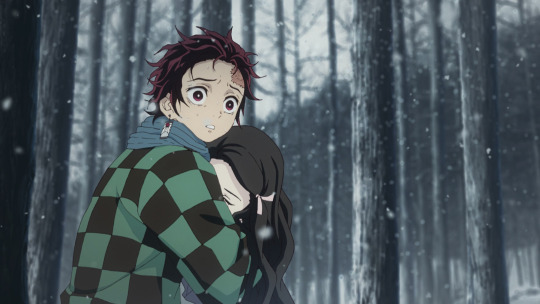
An astonishing 97.6 percent of the 3,848 respondents, who ranged from teens to the elderly, said they knew of the series, with 40.5 percent of people saying they knew it well. Of those who knew the series, they described how they liked the world setting and had sympathy for the characters. A male teenager said that he “was fascinated by the story of the main character growing up while struggling with various difficulties,” while a woman in her sixties enjoyed “the storytelling and LiSA's powerful voice.” A woman in her thirties remarked that she “never thought I'd be talking about anime at my age with my 60-something mother.”
All through the responses, Demon Slayer is bridging the divide between generations, with each generation taking something out of the story that Gotouge has crafted.
The top-notch action scenes and relatable characters draw in the younger crowd, while more middle-aged people get a kick out of the family bonds that weave throughout the story, and the aesthetic of the entire series gives older people a sense of nostalgia, also known as “Taisho romance,” but without it being overly melodramatic about the era. Even kids are going to the schoolyard to reproduce the breathing techniques seen in the series. Japanese Prime Minister Yoshihide Suga joined them when he made a cheeky reference to Demon Slayer’s breathing techniques while speaking to the DIET in November.
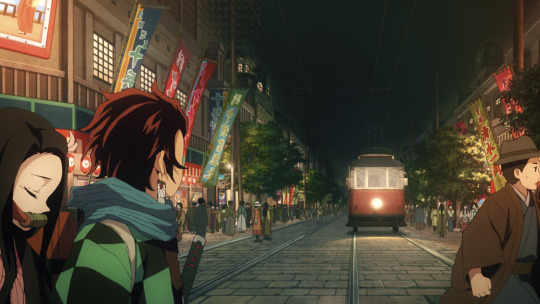
The accumulation of these points has made Demon Slayer a cultural touchstone, one that could only be born out of Japan. Even if the world wasn’t in the current state it is in, the Shonen Jump series would be just as big in its homeland, if not bigger, with more people going to the theaters and traveling to the areas that influenced the series.
Living in Japan at the moment means living in a world surrounded by Demon Slayer. From billboards promoting the film to masks people wear, you can’t go outside (not that people should be!) without having the series in your eyesight. And with how good the series is, and how many people are enjoying it, Demon Slayer: Kimetsu no Yaiba deserves its time in the sun.

Demon Slayer masks being sold in Harajuku in December 2020 (photo: Daryl Harding)

Daryl Harding is a Japan Correspondent for Crunchyroll News. He also runs a YouTube channel about Japan stuff called TheDoctorDazza, tweets at @DoctorDazza, and posts photos of his travels on Instagram.
Do you love writing? Do you love anime? If you have an idea for a features story, pitch it to Crunchyroll Features.
By: Daryl Harding
8 notes
·
View notes
Text
Greta Gerwig: “I have a lot to be euphoric about right now”
by Helen Bownass, Feb 27, 2018.
source: https://www.stylist.co.uk/visible-women/greta-gerwig-interview-lady-bird-oscars-2018/192489
Did you ever imagine that this tale of a teenage girl navigating her life would affect so many people on so many levels?
I certainly wrote it wanting people to identify with it or be able to see themselves in it somehow, but
I never expected it to be on the level that it has been. Doing the London Film Festival [in October 2017] was the first time I had this sense that it was connecting. People were saying, “I’ve never heard of Sacramento, but I’m telling you, that’s my story”,
and that was very emotional
for me.
What I’ve always
loved about movies is that they are something that allows people to understand commonalities between a human experience, even though it might be a highly specific story that doesn’t seem like it would be universal, but somehow it is.
How do you feel about the volume of conversation around your Oscar nomination?
I know how much it’s meant for me: the women I’ve looked up to and their visibility as artists of the cinema has shaped my ability to think that I could do this. Whether it’s Agnès Varda, Sally Potter, Sofia Coppola or how much it meant to me when Kathryn Bigelow won the Oscar… I came to them through repertory programming [a cinema that shows a repertoire of old and art-house films] and that spotlight being placed on female directors changed things for me, so I can only imagine that it probably changes things for other people.
Until it’s closer to 50/50, I say keep shouting about it, because it might reach a girl or woman who hasn’t directed or is looking for the courage to do it and move them to make that step.
Fifty per cent of directors being female by 2020 sounds
great in theory, but
how will we actually get to that point?
When I think about
moving forward, I think
the fact that there aren’t
more female directors
has to do with a lack of
taking a chance on
someone. Experience
aggregates; if someone
doesn’t take a chance
then they don’t get that experience. By the time [a woman] gets all the
way up the ladder when [producers] look round and say, “Who could
direct it?” – but women
weren’t given an
opportunity in the beginning.
Fifty/fifty by 2020 is an incredible goal, but some of these things will need to be persistently tackled for years because you don’t get to an all-male hiring pool in five years – you get to an all-male hiring pool by having 90 years of ‘this is how we do it’. You need to actively push the other way.
I look at statistics of kids graduating from film school and it’s half women, so they’re there. Something happens between half of the people who graduate from film school who are women, to there being no women directors.
I think when these things aren’t talked about, they become invisible because it’s like the air we breathe, and pointing it out makes it obvious.
Have you thought about what your personal role is in changing this?
I’ve been very impressed with women, like Reese Witherspoon and Margot Robbie, who have started their own production companies and hire female directors. This is something that has been percolating for me, and I would love to figure out how to help other women get movies made.
Did you do an inner cheer when Natalie Portman called out the all-male best director nominees at the Golden Globes?
I actually didn’t see that until the next day because I was backstage. My favourite part was the way she backed up from the microphone, as if she just dropped it.
We’ve all witnessed the power of Time’s Up in a post-Weinstein world. How do we ensure that isn’t just for an elite voice? How do we ensure that this is being talked about across all of humanity?
When the leaders of Time’s Up wrote their response letter, it was to women across all industries. Being able to back that up with a legal fund so that women who didn’t have resources could get legal aid if there was a harassment situation in a workplace is very thoughtful and it’s very important.
It’s something that’s obviously in all walks of life. It’s really important to move this on to people who don’t have resources or the same amplification of their voices.
So if you have a voice you should use it?
Yes, it’s partly that, and it’s also about where does the attention in the media go to? The New York Times did an incredible piece about auto workers [exposing how women working at two Ford plants in Chicago faced a culture of harassment, published in December 2017], which was using their powers of investigative journalism to shine a light on something important. Focusing on it in all industries is something that you can raise your voice about and that is another way to use that power to change something.
Do you think as a female filmmaker there is more pressure to prove that you can make a successful film?
I think some of that is changing now. Before, there was a sense that every time a woman directed a movie everyone would wait with baited breath to see if it did well or not, because the feeling would be that if it does well then this is good for women and film, and if it doesn’t then it’s bad. I think we’re looking at a time where the numbers, hopefully, are shifting, so every time it’s not a trial over whether people like films about and directed by and written by women; it just becomes another movie.
I certainly felt in ways that I wanted to be as prepared and as ready as I could be because I wanted to make a good film, and I also knew that if the experience of working with me was good, it might make it that much easier for the next woman who comes along.
Writer and director Aaron Sorkin said that a “cloud of euphoria” surrounds you wherever you go. Do you think that’s true?
I think I have a lot to be euphoric about right now; I’ve had a lot to be euphoric about for a very long time. I’m incredibly lucky that I get to do what I love – I get to be around people who are artists of the highest calibre and I am able to see a road where I continue to do this, so I think euphoria is a pretty [good] response to what is going on.
How do you maintain that with the volume of travel and press you’re doing for this film?
I’m pretty good at sleeping on a plane, but it’s never great sleep. I’ve always slept a lot. If I don’t have eight hours of sleep I tend to see everything more negatively and it takes me longer to finish things. When I began my sophomore
year [at Barnard College, New York] I made a list of priorities
and number one was to get eight hours of sleep. Everything else fell under that.
Do you still write a list of priorities?
Sometimes I have too many
things that are important to me. When you’re writing resolutions or priorities you can get very ambitious, and it creates mores stress because you’re not accomplishing the things that you didn’t have time to accomplish in the first place.
It’s helpful for me to focus on ‘What is the actual thing you’re going for? Sure, it would be lovely if you had an extra three hours
in the day, but if you don’t, what is the thing you really want to do?’
Do you find it easy to recognise what it is you really want? Often many people know there’s something but don’t know how to get to it.
If I’m honest with myself I generally know what it is that I want, it’s just it can get covered over by other things. Sometimes it takes a long time to achieve those goals – for example writing a movie takes a while. Because it’s such a long process, when I would think about the whole thing it would overwhelm me, and I would get scared and think, ‘What if it’s terrible; maybe I should let someone else direct it?’ I would go through whatever my insecurities were.
In a way, it was always, ‘Get it to the next step: just get this scene done. Just get this draft done. Now just give this draft to a friend to read…’ Taking every step as its own action was helpful because it broke it into something that I could wrap my mind around.
You’ve been in the film industry for many years, but this is your first solo-directed project. Where do you go when that is recognised at the highest level critically?
I think no matter who you are, making a film always feels like jumping off a cliff. But if I had to choose my problem, I’d chose this one. If my biggest bellyache is, ‘How will I ever top this?’ then I think that’s OK [laughs].
How do you think Lady Bird will change your career?
When I was going into this, my concern was that I wanted it to reach as many people as it could, but I was mainly thinking about trying to make it easy to make the next one because I want to make a lot of movies. So much of filmmaking is meeting people who will take a chance on you, and it’s easier to take a chance if it worked out the first time. What’s beyond lovely about this moment is that it makes it easier for me to make films now because it went well.
Which other women in the arts should people know about?
Novitiate by Maggie Betts is a beautiful film – and an interesting companion piece to Lady Bird. It’s a completely different vision of Catholicism. It was her first film and I thought it was great. But Chimamanda Ngozi Adichie. Oh my God I love her – I eat her books whole.
I also love the writer Maggie Nelson. I first read The Argonauts and now I’ve read almost everything she’s written. And Durga Chew-Bose is a brilliant writer; she’s published a book of stories that are beautiful called Too Much And Not In the Mood.
How do you think female artists will evolve with the culture around them now?
I think whether it’s in cinema or other mediums, there will be more and more women contributing their voice to the story of what it means to be human, and that voice has been left out for almost all of human history. I always think about the fact that it was less than 100 years ago in the United States that women got the right to vote, so it’s a crazy amount of transformation that is going on and I couldn’t be more excited.
I love literature from the 17th century, but I’m also vividly aware that there is so much of that time that we don’t know because [women] weren’t writing or participating. As you increase the number of people who are women that are making art, you get a much richer vision of what it means to be human.
1 note
·
View note
Text
Background Research on Interactive Films and Choice Based Gaming
This is purely research and from websites, it is not my own writing but a compilation of topical broad research on my topic of choice.
Definitions
https://www.techopedia.com/definition/14429/interactivity
“Interactivity is the communication process that takes place between humans and computer software.
The most constant form of interactivity is typically found in games, which need a continuous form of interactivity with the gamer. Database applications and other financial, engineering and trading applications are also typically very interactive.”
https://dictionary.cambridge.org/dictionary/english/immerse
“To immerse is to become completely involved in something.”
Interactive Films and Choice Based Gaming

https://www.cracked.com/article_26250_netflixs-making-more-choose-your-own-adventure-style-movies.html
“Despite many, many reviewers deriding interactive movies like Bandersnatch being mere short-term gimmicks, this could indeed be the future. Cinematic history is rife with fads, from hypnotism to smell-o-vision to even a previous brief go at interactive storytelling with the 1995 short Mr. Payback. Like Bandersnatch, all of these were experiments to promote audience engagement (two words that count as foreplay to marketers) but were just too fiddly, flashy, or expensive to be worth the hassle after the novelty wore off.”
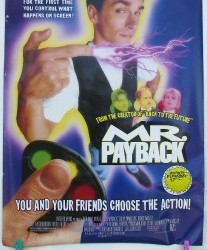
https://en.wikipedia.org/wiki/Interactive_film
“The first example of interactive cinema was Kinoautomat (1967). This film was produced before the invention of the laserdisc or similar technology, so a live moderator appeared on stage at certain points to ask the audience to choose between two scenes. The chosen scene would play following an audience vote.
With advances in computer technology, interactive films waned as more developers used fully digitized characters and scenes. This format was popularized by Telltale Games, achieving success in The Walking Dead series of adventure games. These have sometimes been called interactive movies, as while the player can make choices that affect the game's overall narrative, they do not have direct control over characters, making the experience comparable to watching a sequence of cut scenes.”
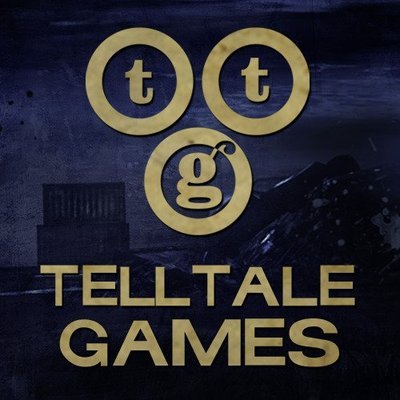
“By 2016, Netflix had started experimenting with interactive works aimed at children, including an animated version of Puss in Boots and an adaption of Telltale's Minecraft: Story Mode. Netflix's first major interactive film with live-action scenes was Black Mirror: Bandersnatch, a film in the Black Mirror anthology series and released in December 2018. Netflix worked with Black Mirror's creator Charlie Brooker to develop a narrative that took advantage of the interactive format while developing their own tools to improve caching of scenes and management of the film's progression to use on future projects.”
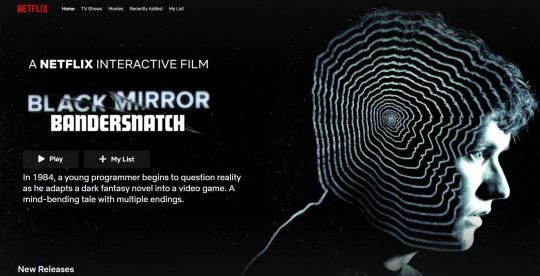
https://www.theguardian.com/technology/2001/apr/05/onlinesupplement5
“1953: A children's television program called Winky Dink and You, begins the move towards interactive TV. Kids in the US buy a special transparent sheet to place over the screen and, using ordinary crayons, help the show's characters draw things like pathways or tools. The series is discontinued because children begin drawing directly on the TV screen.
1959: First use of telephone call-ins during NBC's Today Show.”
https://www.factinate.com/editorial/choosing-your-own-adventure-the-history-of-interactive-movies/
“So far, in the 50-year history of what we could call interactive movies, there hasn’t really been a ground-breaking success that has changed the way we consume film. The problem seems to be twofold. First, thus far, there have always been limitations to the technology. Second, is that people go to the movies to be absorbed by a story—and when you’re directing the action, it’s impossible to reach that level of complete captivation that creates the ideal movie-going experience.
The integration of 3D technology for movies took a long time—over 50 years for it to become regularly used for theatrical releases. As for interactive films, it’s already taken that long, and so far, no film seems to have ironed out the fundamental issues that plague the medium. Maybe Black Mirror: Bandersnatch will be the first in what we’ll come to know in the future as the interactive movie revolution
Filmmakers have periodically attempted to add interactive elements to their work, long before the Choose Your Own Adventure craze of the 80s. The first example of this was screened at the Expo 67 World’s Fair in Montreal. The film, called Kinoautomat, was directed by Raduz Cincera, and it was presented at the Fair’s Czechoslovak Pavilion. Throughout the film, the action stops, and the viewer is presented with a set of options nine different times. However, regardless of what they choose, the conclusion (shown in a flash-forward scene at the start of the film) is always the same—the main character ends up with his apartment on fire. The director intended the film to satirize the illusion of choice in a democracy.”

https://www.rogerebert.com/rogers-journal/dim-future-for-interactive-film
“The key difference between interactive movies and interactive games is that the games operate on a one-on-one basis, while the movies theoretically would have to involve an audience and the rule of the majority. Also, the new kinds of games are intuitive; you click here or there on the screen, discovering what will happen, while with an interactive movie would have to be some sort of menu of choices or plot lines
My feeling is that the two art forms really have little in common, except perhaps for the invitations they issue for us to enter their worlds. When we go to the movies, we enter into the experience of the characters. In some way, we become them. When we play an interactive game, we are the central character, and we determine our own experience.”
https://www.tandfonline.com/doi/pdf/10.1207/S1532785XMEP0304_03?needAccess=true
“Does Entertainment Suffer From Interactivity? The Impact of Watching an Interactive TV Movie on Viewers' Experience of Entertainment
Peter Vorderer, Silvia Knobloch &Holger Schramm
To investigate whether interactivity enhances entertainment in interdependence with individual factors, an experiment with a 3 × 2 between subject design was conducted. 427 participants aged between 14 and 49 were randomly assigned to a 30_minute TV movie with three different interactivity levels and two different introductions that should diversify feelings of sympathy toward the protagonist.
The results indicate that individuals with lesser cognitive capacity feel more entertained, that is, they feel more empathic toward the protagonist, feel more suspense, and evaluate the movie more positively when they watch it without any interactivity, in the traditional passive manner. For individuals with greater cognitive capacity, it is just the opposite: They can use interactivity to their advantage. An increase in their entertainment experience was observed as a direct consequence of their being able to influence the plot of the movie.”
https://screenrant.com/black-mirror-bandersnatch-creator-critics-response/
“There’s also some people that are like ‘I don’t wanna make decisions’, ‘I don’t want to do any of it’... well fuck off, then. Do something else! And then there’s some people who think ‘oh, it’s too simple as a game’ or ‘games have done this before’ – well this isn’t on a gaming platform, it’s on Netflix. I’m well aware of what a computer game is, thanks." – Charlie Brooker, creator of Black Mirror
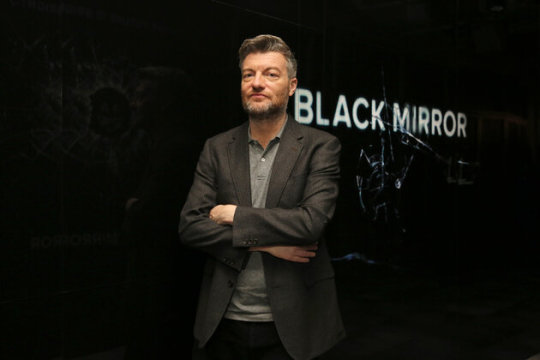
Netflix ought not to forget that its true power rests in its ability to reach subscribers in the comfort of their own homes, and the popularity of Bandersnatch, irregular format and all, perfectly exemplifies this. Without its interactivity, Bandersnatch would likely have never been propelled into the spotlight it enjoys now, but the very thought of a theater audience frequently brandishing their too-bright smartphones on public wifi at a theatrical screening of the film should be enough to send a shiver up any moviegoer's spine.”
https://www.whats-on-netflix.com/library/interactive-titles-on-netflix/

“Not all devices support interactive titles. Chromecasts are the most notable devices not support it as well as most of the Apple devices too.”
https://www.popsugar.co.uk/entertainment/More-Interactive-Movies-Netflix-45666858
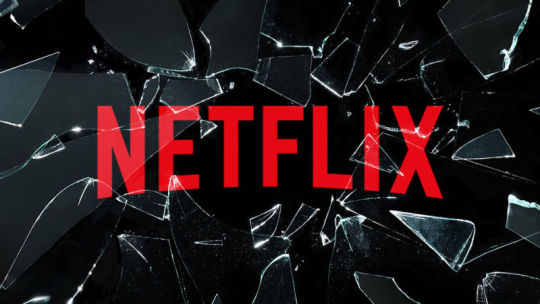
“Bloomberg was the first to report Netflix's plans for interactive programming back in October 2018. The reports at the time identified Black Mirror as likely the first big project to test the interactive waters, but they also included indications that this would only be the first of multiple projects with a similar approach. "[Netflix] has closed a deal for at least one more live-action project and is negotiating the rights to others," claimed a pair of anonymous sources in the Bloomberg article.
Even the Netflix app is getting on board, expanding for the capabilities to handle the different technical requirements of streaming a program with multiple options. Per Variety, the app was restructured to pre-cache two possibilities at once, rather than just one linear item, to ensure smooth streaming throughout the process.
All of these facts seem to point toward a future where Netflix does produce more interactive programming. The company's vice president of product, Todd Yellin, seemed to think as much when speaking to Variety, alluding to plans to experiment with other genres (such as romances, comedies, and horror movies) in the interactive space. "[Black Mirror] just happens to be a great audience for the first one. . . . We think we are onto something that could be really exciting," he said.
The rumors that Netflix was heading into the interactive programming niche first started circling early in 2018, thanks to a partnership with Telltale Games, a video game company. Although word spread quickly that Netflix might be trying to adapt the choose-your-own-path style of video games to television programming, the questions quickly hit a bump in the road when Telltale went defunct in the Fall of 2018. Its interactive adventure Minecraft: Story Mode (also a collaboration with Netflix) was the final project from the company.”
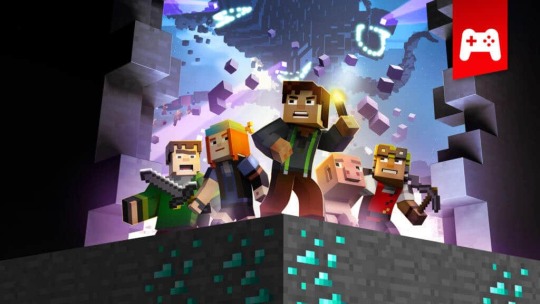
https://variety.com/2019/digital/asia/netflix-doubling-down-on-interactive-series-bandersnatch-success-1203161088/
Netflix is doubling down on interactive series after the global success of “Black Mirror” spinoff “Bandersnatch,” the streaming giant’s VP of product, Todd Yellin, said in Mumbai on Tuesday. Yellin was delivering a keynote presentation at the 20th edition of media and entertainment conference FICCI-Frames.
“It’s a huge hit here in India, it’s a huge hit around the world, and we realized, wow, interactive storytelling is something we want to bet more on,” Yellin said. “We’re doubling down on that. So expect over the next year or two to see more interactive storytelling. And it won’t necessarily be science fiction, or it won’t necessarily be dark. It could be a wacky comedy. It could be a romance, where the audience gets to choose – should she go out with him or him.”
0 notes